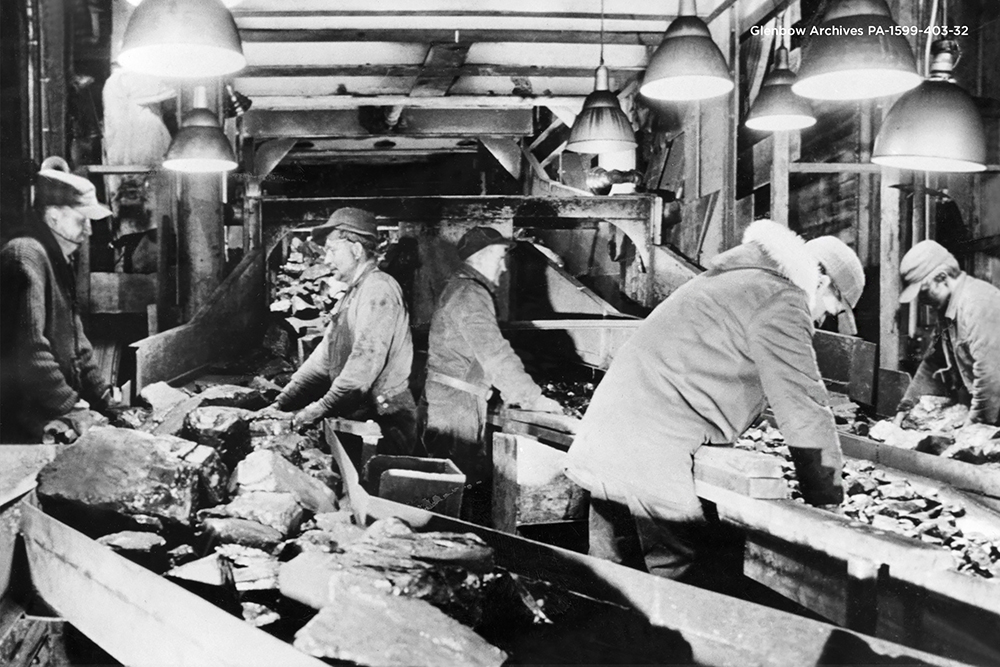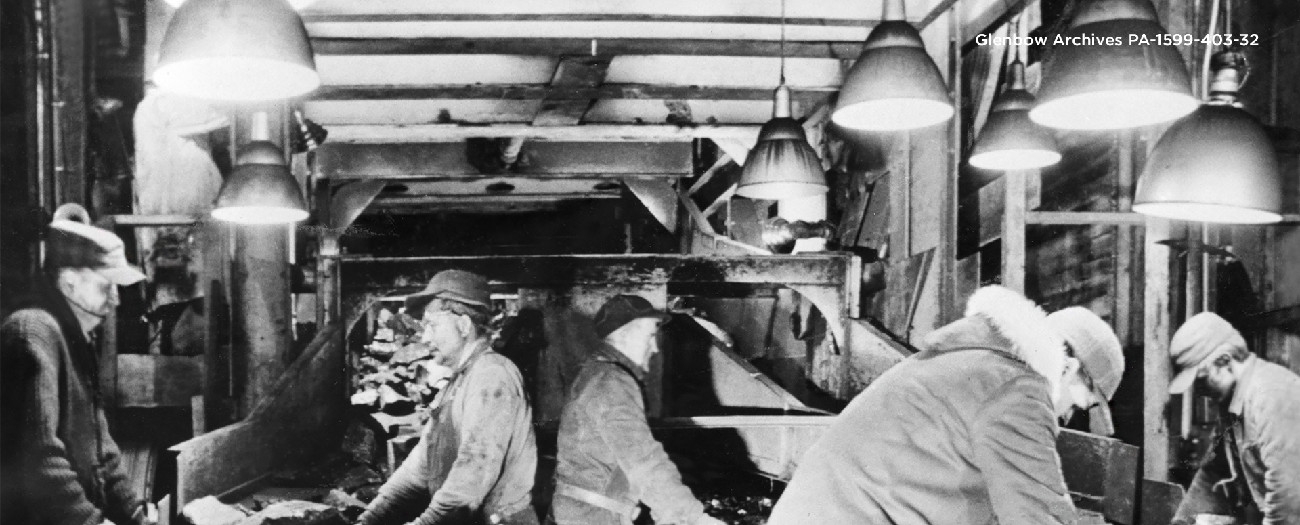Taking a look back at Alberta's coal boom in the badlands
Alberta - May 07, 2020
Picking crews removing impurities from coal at Atlas Coal Mine, East Coulee, Alberta, ca. 1957, [PA-1599-403-32] by the Calgary Herald. Courtesy of Glenbow Library and Archives, Archives and Special Collections, University of Calgary. Modifications to this image include cropping.
During its peak years around 1930 and again later in the mid-1940s, the East Coulee coal mining town near Drumheller in Alberta’s Red Deer River Valley was home to over 3000 residents and dozens of thriving businesses. In the mid-1950s, however, its population began to plummet and its business count dropped to three—a hotel, a garage, and a grocery store. By 1970, the town’s school had closed.
As with other coal communities, East Coulee’s demise began in the 1950s due to the combination of expanding oil and natural gas industries and the transition of many industries to fuels other than coal. The reduced demand for the valley’s coal resulted in the closure of all Drumheller area mines at the time, except for the Atlas Mine at East Coulee. The Atlas Mine survived until 1979 as a severely scaled back version, decreasing from year-round to seasonal operation, and from employing more than 200 miners to having only 60 on the payroll. The mine’s reduction in the 1950s sent much of the town’s population to other areas in search of work, leaving an eerie mix of boarded-up buildings and abandoned mines amid the stark scenery of Alberta’s badlands.
Resource Editor


